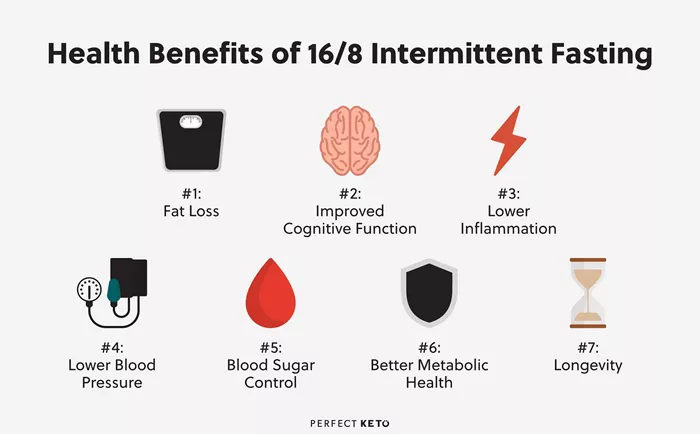In the pursuit of weight loss, the exercise bike has emerged as a popular and effective piece of equipment. It offers a low – impact cardiovascular workout that can be tailored to various fitness levels. However, determining how often to use an exercise bike for weight loss is not a one – size – fits – all answer. It depends on multiple factors such as an individual’s current fitness level, diet, and overall weight loss goals. This article will delve into these aspects to provide a comprehensive guide on optimizing the use of an exercise bike for weight loss.
Understanding Weight Loss
Before discussing the frequency of exercise bike use, it’s crucial to understand the basics of weight loss. Weight loss occurs when there is a calorie deficit, meaning that the number of calories burned is greater than the number of calories consumed. One pound of body fat is approximately equivalent to 3,500 calories. So, to lose one pound per week, a person needs to create a calorie deficit of about 500 calories per day.
Calories can be burned through two main avenues: physical activity and the body’s basal metabolic rate (BMR). BMR is the number of calories the body burns at rest to maintain basic functions such as breathing, circulation, and cell production. Physical activity, including exercise on an exercise bike, adds to the calorie – burning equation.
Factors Affecting Exercise Bike Use Frequency for Weight Loss
Fitness Level
Beginner
For those new to exercise, starting slowly is key. Beginners may have limited cardiovascular endurance and muscle strength. Initially, using the exercise bike 2 – 3 times a week for 20 – 30 minutes per session is a reasonable starting point. This allows the body to gradually adapt to the physical stress of exercise. Starting too aggressively can lead to fatigue, muscle soreness, and even injury, which may derail the weight – loss journey.
During these early sessions, the focus should be on maintaining a consistent pedaling rhythm and gradually increasing the resistance as the body gets stronger. For example, a beginner could start with a resistance level of 2 – 3 on a scale of 1 – 10 and increase it by 1 level every 2 – 3 sessions.
Intermediate
Intermediate – level individuals have a better – developed cardiovascular system and more muscle strength. They can increase the frequency of their exercise bike sessions to 4 – 5 times a week. Sessions can be extended to 30 – 45 minutes each. At this stage, more intense workouts can be incorporated.
Interval training, for instance, is a great option. This involves alternating between short bursts of high – intensity pedaling (e.g., 30 seconds at a high resistance and fast speed) and longer periods of low – intensity recovery (e.g., 1 – 2 minutes at a lower resistance). Interval training can boost calorie burn and improve cardiovascular fitness more effectively than steady – state exercise.
Advanced
Advanced exercisers can push the limits further. They can use the exercise bike 5 – 6 times a week, with sessions lasting 45 – 60 minutes or more. These workouts can be highly intense, combining different types of intervals, hill – climbing simulations, and high – resistance pedaling.
Advanced users can also consider incorporating strength – training elements into their exercise bike routine. For example, standing up on the pedals while pedaling can engage more leg muscles, adding a strength – training component to the cardiovascular workout.
Overall Health
Medical Conditions
Individuals with certain medical conditions need to be cautious when using an exercise bike for weight loss. For example, people with joint problems such as arthritis may need to limit the intensity and duration of their rides. Low – impact settings should be used, and the frequency may need to be adjusted based on how the joints respond.
Those with heart conditions should consult their doctor before starting an exercise bike routine. The doctor may recommend specific heart – rate zones to ensure the exercise is safe. In some cases, the frequency and intensity of exercise may need to be carefully monitored to avoid over – stressing the heart.
Age
Age can also play a role in determining exercise bike use frequency. Older individuals may have reduced joint flexibility and cardiovascular function compared to younger people. They may need to start with a lower frequency and intensity, similar to beginners. However, with proper progression, they can still achieve significant weight loss through regular exercise bike use.
On the other hand, younger individuals generally have more energy and resilience. They can often adapt more quickly to increased exercise frequency and intensity. But this doesn’t mean they can overdo it. Young people still need to listen to their bodies and avoid over – training to prevent injury.
Diet
Calorie Intake
Diet is a crucial factor in weight loss. Even if a person uses the exercise bike regularly, if their calorie intake is too high, they may not achieve the desired weight loss. For example, if someone burns 300 calories during a 30 – minute exercise bike session but then consumes a high – calorie meal that contains 500 extra calories, they are still in a calorie surplus.
To support weight loss, it’s essential to maintain a balanced diet with appropriate calorie intake. A general rule of thumb is to consume a diet rich in fruits, vegetables, lean proteins, and whole grains. Reducing the intake of processed foods, sugary drinks, and high – fat items can significantly contribute to creating a calorie deficit.
Meal Timing
Meal timing can also impact the effectiveness of exercise bike use for weight loss. Eating a balanced meal 1 – 2 hours before a workout can provide the necessary energy for a more intense ride. Post – workout, consuming a small snack rich in protein and carbohydrates can help replenish glycogen stores and support muscle recovery.
For example, having a banana and a handful of nuts before a workout can provide a quick energy boost, while a protein shake or a piece of grilled chicken with some brown rice after a workout can aid in muscle repair and growth.
Exercise Bike Workouts for Weight Loss
Steady – State Cardio
Description
Steady – state cardio on an exercise bike involves maintaining a consistent speed and resistance throughout the workout. This type of exercise is great for beginners as it helps build a base level of cardiovascular endurance. For example, a person could set the resistance at a moderate level (e.g., 4 – 5 on a scale of 1 – 10) and pedal at a steady pace of 60 – 70 revolutions per minute (RPM) for 30 minutes.
Calorie Burn and Benefits
Steady – state cardio burns a significant number of calories. On average, a person can burn around 300 – 500 calories in a 30 – minute steady – state exercise bike session, depending on their weight, intensity, and duration. It also improves heart health, increases lung capacity, and helps with overall weight management.
Interval Training
Description
Interval training on an exercise bike involves alternating between short bursts of high – intensity exercise and periods of low – intensity recovery. For example, a typical interval training session could start with a 5 – minute warm – up at a low resistance and slow speed. Then, for 30 seconds, the rider increases the resistance to a high level (e.g., 8 – 9 on a scale of 1 – 10) and pedals as fast as possible. After that, they reduce the resistance to a low level (e.g., 2 – 3) and pedal at a slow, easy pace for 1 – 2 minutes to recover. This cycle is repeated for 20 – 30 minutes, followed by a 5 – minute cool – down.
Calorie Burn and Benefits
Interval training is highly effective for weight loss as it increases the after – burn effect, also known as excess post – exercise oxygen consumption (EPOC). After an interval training session, the body continues to burn calories at an elevated rate for several hours. This can lead to a greater overall calorie burn compared to steady – state cardio. In a 30 – minute interval training session, a person may burn 400 – 600 calories or more, depending on their fitness level and the intensity of the intervals.
Hill – Climbing Simulations
Description
Hill – climbing simulations on an exercise bike mimic the experience of riding uphill. Most modern exercise bikes have a feature that allows users to adjust the resistance to create different levels of incline. A hill – climbing workout could start with a flat – terrain warm – up for 5 minutes at a moderate resistance. Then, the resistance is gradually increased every 2 – 3 minutes to simulate climbing a hill. The rider pedals at a steady pace, working harder as the resistance increases. After reaching a peak resistance, the resistance is gradually decreased to simulate descending the hill.
Calorie Burn and Benefits
This type of workout engages more muscle groups, especially in the legs, compared to a flat – terrain ride. It can burn a significant number of calories, similar to interval training. Hill – climbing simulations also strengthen the leg muscles, improve leg endurance, and enhance overall cardiovascular function.
Determining the Ideal Frequency
Short – Term vs. Long – Term Goals
If the goal is short – term weight loss, such as losing a few pounds for a special event in a month or two, a more intense exercise bike routine may be necessary. This could involve using the exercise bike 5 – 6 times a week with a combination of interval training and hill – climbing simulations. However, it’s important to note that rapid weight loss may not be sustainable in the long run.
For long – term weight loss and overall health improvement, a more gradual approach is often better. Starting with 3 – 4 sessions per week and gradually increasing the frequency and intensity over time can help the body adapt and make the weight – loss process more sustainable.
Combining with Other Exercises
To optimize weight loss, it’s beneficial to combine exercise bike use with other forms of exercise. Strength training, such as weightlifting or bodyweight exercises, can help build muscle. Muscle burns more calories at rest than fat, so increasing muscle mass can boost the body’s BMR.
For example, a person could use the exercise bike 3 – 4 times a week and incorporate 2 – 3 strength – training sessions into their routine. This could include exercises like squats, lunges, push – ups, and sit – ups. Additionally, adding activities like walking, swimming, or yoga can provide a well – rounded fitness program and prevent boredom.
Monitoring Progress
Weight and Body Measurements
Regularly monitoring weight and body measurements is an important part of the weight – loss process. Weighing yourself once a week at the same time of day (preferably in the morning before eating or drinking) can give you an idea of your overall weight trend. However, it’s important to note that weight can fluctuate due to factors such as water retention, so relying solely on weight may not be the most accurate measure.
Taking body measurements, such as waist, hips, thighs, and arms, every 2 – 4 weeks can provide a more comprehensive view of your progress. Even if the scale doesn’t show a significant change, a reduction in body measurements indicates that you are losing fat and potentially gaining muscle.
Fitness Level Improvements
Monitoring your fitness level is also crucial. Notice how your body responds to exercise bike workouts over time. If you find that you can pedal at a higher resistance or speed for the same duration without feeling as tired, it means your fitness level is improving. You can also measure your heart rate during and after workouts. As your fitness level increases, your heart rate may decrease during exercise, indicating that your heart is becoming more efficient.
Conclusion
Determining how often to use an exercise bike to lose weight requires a personalized approach. Factors such as fitness level, overall health, diet, and weight – loss goals all play important roles. Beginners should start slowly and gradually increase the frequency and intensity of their workouts. Intermediate and advanced users can challenge themselves with more intense exercise bike routines, including interval training and hill – climbing simulations.
Combining exercise bike use with a balanced diet and other forms of exercise is key to achieving sustainable weight loss. Regular monitoring of progress through weight, body measurements, and fitness level improvements can help you stay on track and make adjustments to your routine as needed. By following these guidelines, you can make the most of your exercise bike and reach your weight – loss goals effectively.
Related topics:
15 Best Anaerobic Exercises For Weight Loss



































